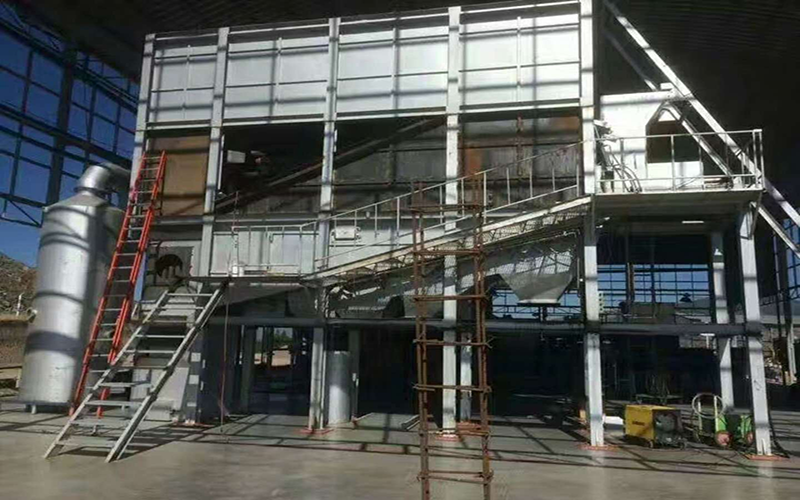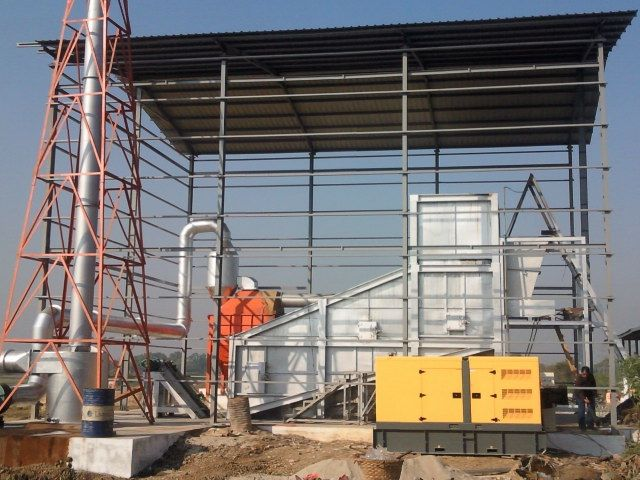 English
English Español
Español  Português
Português  русский
русский  Français
Français  日本語
日本語  Deutsch
Deutsch  tiếng Việt
tiếng Việt  Italiano
Italiano  Nederlands
Nederlands  ภาษาไทย
ภาษาไทย  Polski
Polski  한국어
한국어  Svenska
Svenska  magyar
magyar  Malay
Malay  বাংলা ভাষার
বাংলা ভাষার  Dansk
Dansk  Suomi
Suomi  हिन्दी
हिन्दी  Pilipino
Pilipino  Türkçe
Türkçe  Gaeilge
Gaeilge  العربية
العربية  Indonesia
Indonesia  Norsk
Norsk  تمل
تمل  český
český  ελληνικά
ελληνικά  український
український  Javanese
Javanese  فارسی
فارسی  தமிழ்
தமிழ்  తెలుగు
తెలుగు  नेपाली
नेपाली  Burmese
Burmese  български
български  ລາວ
ລາວ  Latine
Latine  Қазақша
Қазақша  Euskal
Euskal  Azərbaycan
Azərbaycan  Slovenský jazyk
Slovenský jazyk  Македонски
Македонски  Lietuvos
Lietuvos  Eesti Keel
Eesti Keel  Română
Română  Slovenski
Slovenski  मराठी
मराठी  Srpski језик
Srpski језик
Reciprocating grate incinerator
2023-09-14
The reciprocating grate incinerator is a heat treatment equipment used for solid waste treatment. Its main principle is to place solid waste in the furnace and decompose it into ash and gas through high-temperature combustion, achieving the goal of reduction and resource utilization. The following will provide a detailed introduction to the structure, working principle, advantages and disadvantages, and application scenarios of a reciprocating grate incinerator.

https://www.incineratorsupplier.com/
Construction:
The reciprocating grate incinerator mainly consists of the furnace body, furnace, grate, burner, fan, exhaust pipeline, etc. The furnace body is designed according to the required structural characteristics and is tightly connected to the furnace and exhaust pipeline. The furnace is generally rectangular and equipped with a grate inside, which can evenly distribute solid waste in the combustion area. The burner of the incinerator is flexible in use and can be designed into multiple combustion chambers, which can be flexibly combined without affecting work efficiency. The fan is used to deliver hot gas to the exhaust pipeline.
Working principle:
The working principle of a reciprocating grate incinerator is mainly divided into three stages: preheating, drying, and high-temperature pyrolysis. After solid waste is placed in the furnace, it is first preheated from low to high temperature. Next, enter the drying stage and evaporate the water from the solid substance. Finally, solid substances are decomposed into ash and gas through high-temperature combustion, and the flue gas in it is purified to meet emission standards.

Advantages and disadvantages:
Compared with traditional incinerators, reciprocating grate incinerators have the following advantages:
(1) High temperature pyrolysis efficiency and large processing capacity.
(2) Adopting intermittent combustion to reduce energy consumption.
(3) Adopting advanced pneumatic devices to reduce secondary pollution.
(4) It can handle various types of solid waste, such as household waste, medical waste, industrial waste, etc.
(5) The amount of waste generated is small and can be further treated and utilized.
But it also has the following drawbacks:
(1) The investment cost is high.
(2) The maintenance of combustion equipment requires a high level of technical proficiency.
(3) The supporting facilities required for waste treatment are relatively complex.

Application scenario:
Reciprocating grate incinerators can be widely used for different types of solid waste, such as household waste, medical waste, industrial waste, etc. It has corresponding applications in fields such as environmental protection, urban construction, health, and healthcare.
In summary, the reciprocating grate incinerator is an advanced solid waste treatment equipment that has enormous advantages in solid waste treatment and resource utilization after treatment, with extremely high economic and environmental benefits.
https://www.incineratorsupplier.com/




